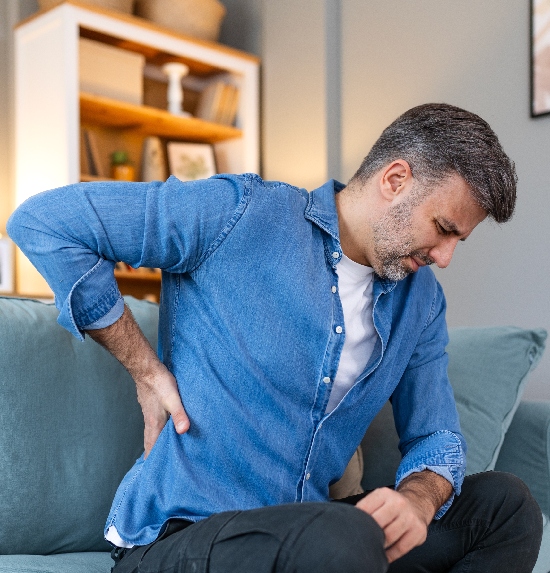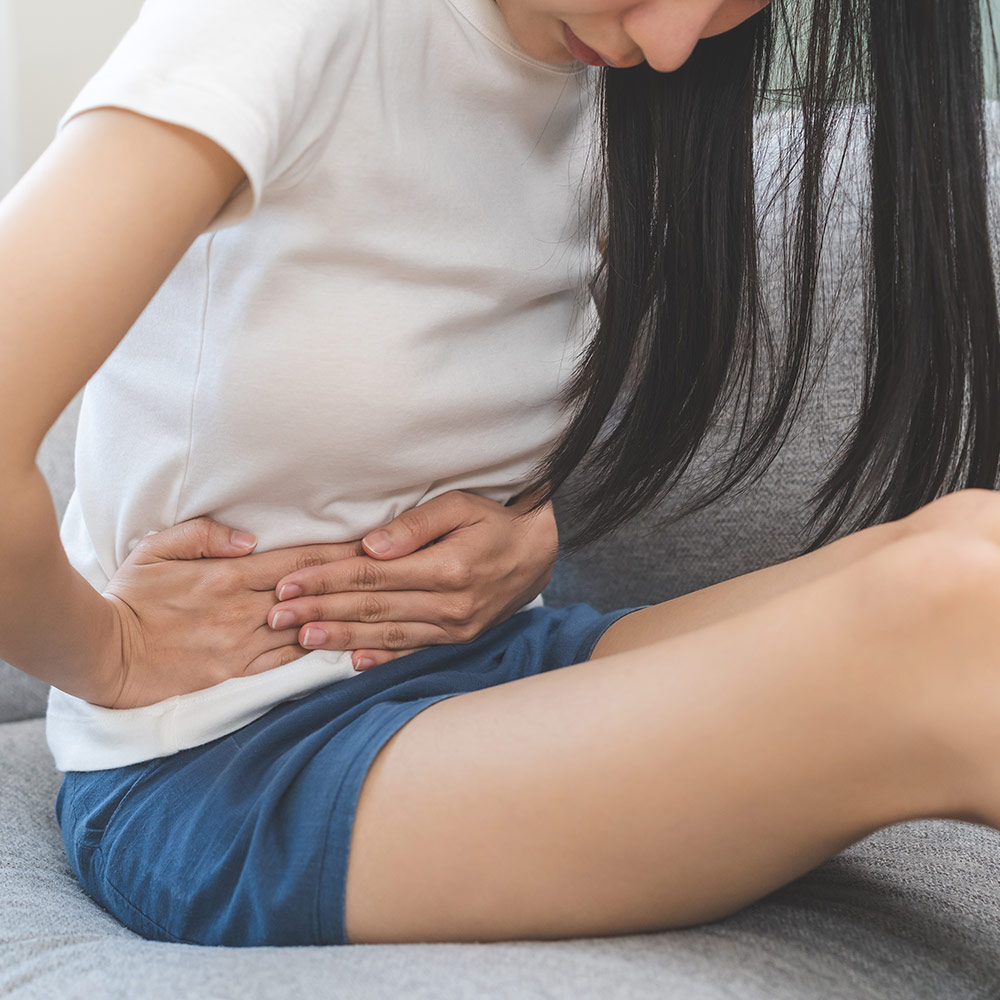
Understanding Menstrual Pain
- Dysmenorrhoea, commonly known as menstrual pain, is a prevalent condition affecting individuals during their menstrual cycles, particularly in their reproductive years. This pain is typically centred in the lower abdomen and may radiate to the inner thighs and back.1
- Menstrual pain significantly influence one’s emotional, psychological and functional well-being.1
Types of Dysmenorrhoea1
- Primary dysmenorrhoea: This type is characterized by recurring pain in the lower abdomen during menstruation, which is not linked to any other medical condition.
- Secondary dysmenorrhoea: This type is associated with underlying medical issues or identifiable pathologies.
Causes
Primary Dysmenorrhoea
- Primary dysmenorrhoea stems from the body’s natural menstrual cycle and is not a result of any underlying disease.2
- The pain is caused by an increase in inflammatory chemicals. These chemicals trigger strong muscle contractions in the uterus, which reduce blood flow and oxygen to the area, leading to pain.3
Secondary Dysmenorrhoea
- Secondary dysmenorrhoea is linked to specific medical conditions or abnormalities.2
- Secondary dysmenorrhoea is often associated with specific medical conditions such as endometriosis, where tissue similar to the uterine lining grows outside the uterus, or adenomyosis, which involves the growth of this tissue into the uterus muscular wall.2
- Other contributing factors can include uterine fibroids, congenital abnormalities in the uterus, polyps, the use of an intrauterine contraceptive device, ectopic pregnancy (pregnancy when a fertilized egg grows outside of the uterus), pelvic scar tissue, pelvic abscess, infections of the uterus, fallopian tubes or ovaries, ovarian cysts and though rare, tumours in the uterus or ovaries.2
Risk Factors
- Several factors may increase the likelihood of experiencing menstrual pain, including1:
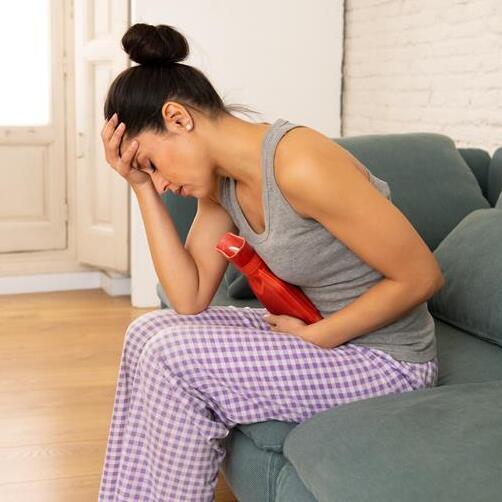
Being 30 years old or younger

Smoking

Trying to lose weight

Having a body mass index (BMI) that’s considered too high or too low

Mental health conditions such as depression or anxiety

Longer menstrual cycles

Early onset of menstruation

Nulliparity, which means never having given birth

A history of sexual assault
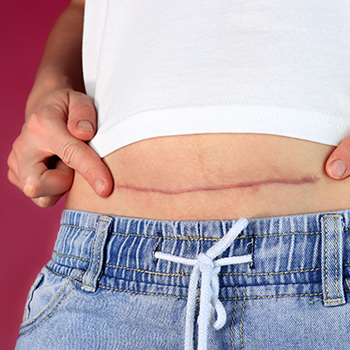
Complications from a previous caesarean section, such as incomplete healing of the uterine scar

Longer and heavier menstrual periods
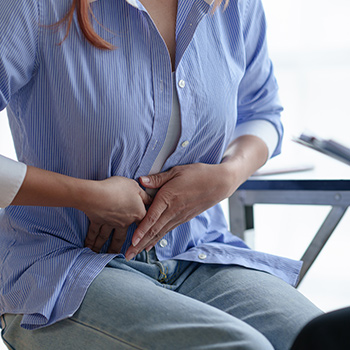
A family history of menstrual pain

Disruptions in social support or connections
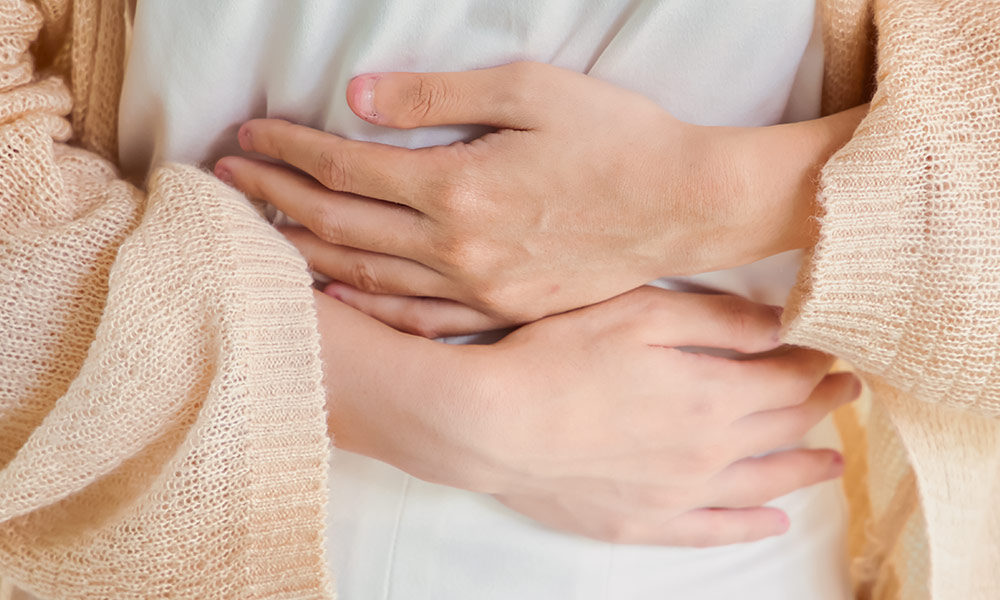
Symptoms
The symptoms of dysmenorrhoea may include a range of stomach-related issues, such as nausea, bloating, diarrhoea, constipation, vomiting and indigestion. The table below summarizes the key differences between primary and secondary dysmenorrhoea.1
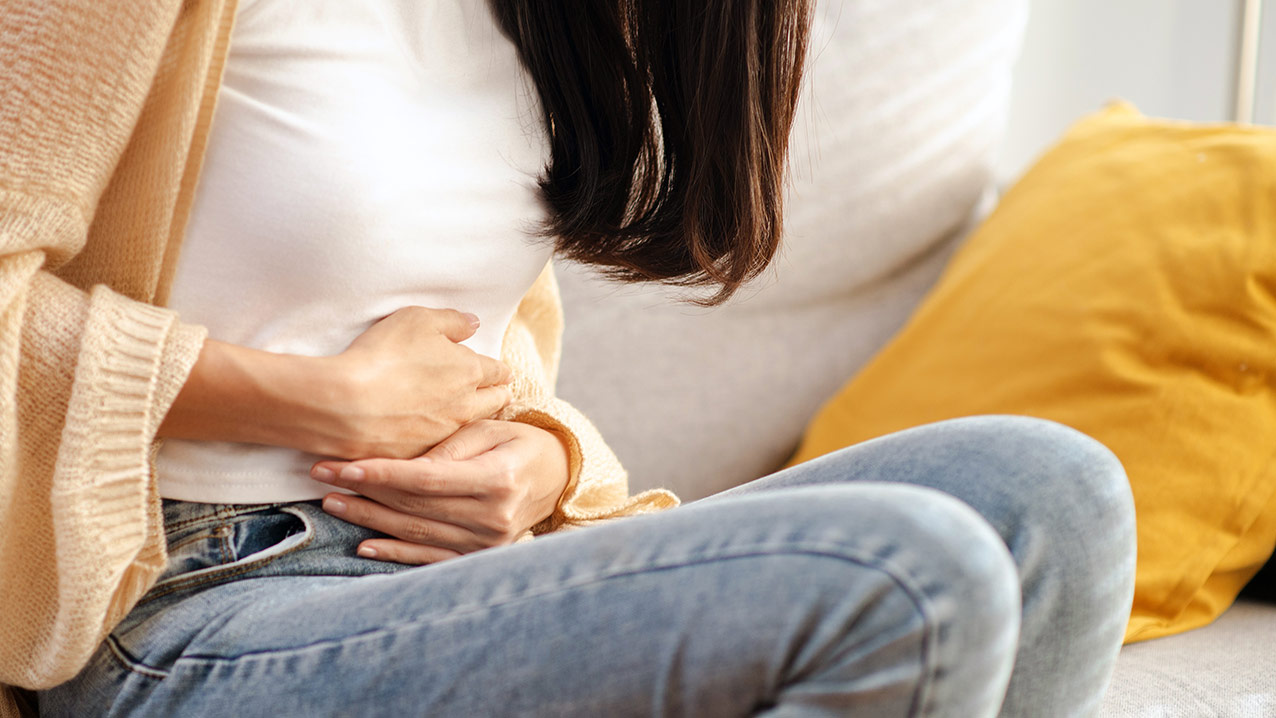
| Aspect | Primary Dysmenorrhea | Secondary Dysmenorrhea |
|---|---|---|
| Onset | Within 2 years of the first menstrual period or once ovulatory cycles are established | Can occur at any time after the first menstrual period and is often noted as a new symptom in females in their 30s or 40s |
| Typical age group | More common in adolescents and young adults | Can affect women of any age |
| Pain characteristics |
|
|
| Associated symptoms |
|
|
| Aspect | Primary Dysmenorrhea | Secondary Dysmenorrhea |
|---|---|---|
| Onset | Within 2 years of the first menstrual period or once ovulatory cycles are established | Can occur at any time after the first menstrual period and is often noted as a new symptom in females in their 30s or 40s |
| Typical age group | More common in adolescents and young adults | Can affect women of any age |
| Pain characteristics |
|
|
| Associated symptoms |
|
|

Diagnosis
- To diagnose severe menstrual pain, your doctor will discuss your medical history with you and perform an internal check-up. Sometimes, you may also need an ultrasound.4
- Primary dysmenorrhoea is usually diagnosed in teenagers and young adults when the pain starts a few hours after the period begins and typically goes away within 72 hours. This pain is felt in the middle of the pelvis and may spread to the lower back or upper legs.1
- If your doctor suspects you have secondary dysmenorrhoea, you might need a laparoscopy. This is a type of surgery that allows your doctor to see inside your body.4
Management
- The primary objective of treating dysmenorrhoea is to alleviate pain, enabling individuals to continue with their daily activities.1
- Treatment for both primary and secondary dysmenorrhoea typically begins with patient education, reassurance, supportive care, and medical interventions.1
Methods for Easing Dysmenorrhoea5
Water Intake
- Drink more water during your period to keep your body hydrated.
- This can help reduce bloating and may also lessen the intensity and duration of your menstrual cycle.
- If you don’t like the taste of plain water, try adding some flavour by drinking lemon water, mint-infused water, ginger tea or reduced-sodium vegetable broth. These options can make staying hydrated more enjoyable and help you increase your fluid intake.
Food intake
- Diet plays a key role in reducing menstrual pain.
- Eating the right foods, especially those rich in healthy fats, can help ease menstrual pain.
Good Fats and Anti-Inflammatory Foods That Help Reduce Menstrual Pain5
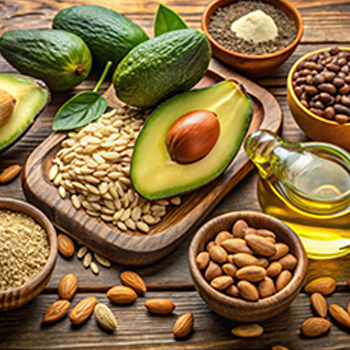
Heart-Healthy Fats
Olive oil, peanut oil, almond, avocados, cashews, canola oil, sesame seeds, and fish oil

Essential Fats
Vegetable oils (corn, soybean, safflower, cottonseed), blueberries, cherries, lemon juice, bell peppers, tomatoes and fish
Herbal Treatment for Ease of Dysmenorrhoea5
Chamomile
- Chamomile is a herbal remedy that can be beneficial for treating dysmenorrhoea and many other conditions.
- Drinking chamomile tea may help with menstrual pain, abdominal bloating, back pain, bladder issues, anxiety and more
Fennel
- Fennel is a herbal medicine often recommended for treating menstrual pain.
- This aromatic, grassy plant has been used across the Mediterranean region to help ease menstrual pain.
- Research shows that fennel extract can be particularly effective for primary dysmenorrhoea, as it helps reduce uterine contractions.
Cinnamon
- Cinnamon is well known for its medicinal benefits, including anti-inflammatory, antioxidant, antibacterial and antifungal properties.
- Taking 3 grams of cinnamon daily can help reduce menstrual discomfort without any side effects.
- It’s safe to use for easing menstrual pain and can be added to your cereal or a warm drink.
Ginger
- Taking powdered ginger 3 times a day, with a dose ranging from 750 mg to 2000 mg during the first 3 days of menstruation, can greatly reduce menstrual pain.
- It is effective and has no harmful side effects.
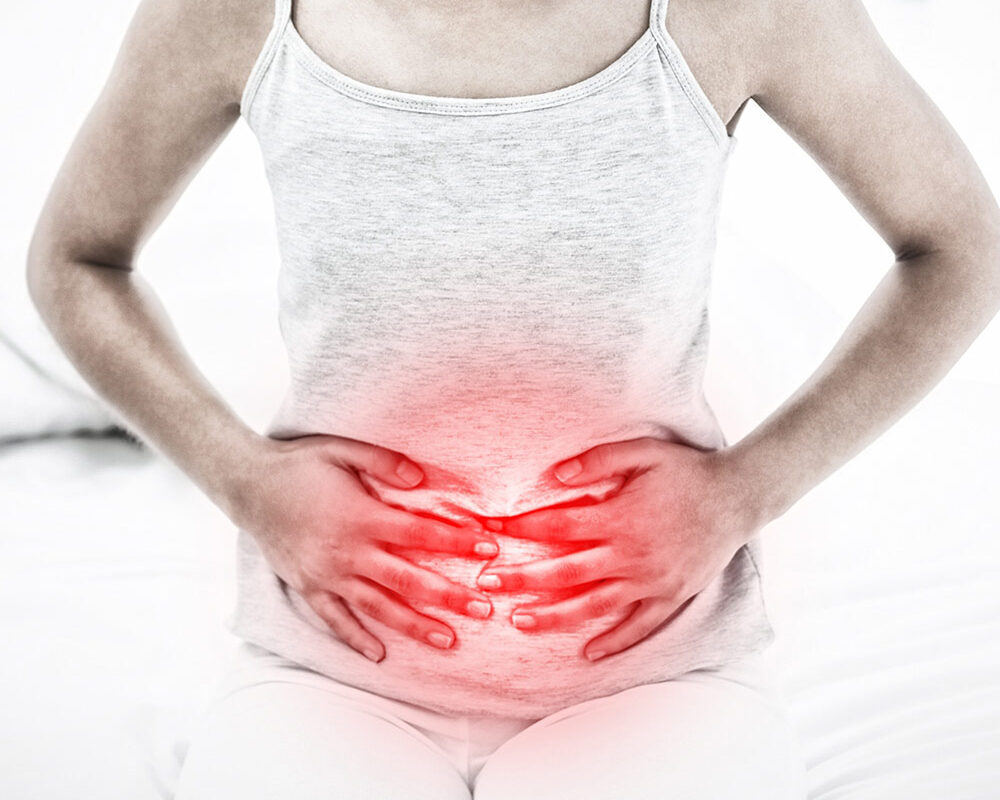

Non-Pharmacological Treatments
- Topical heat: Applying heat to the lower abdomen is an effective, simple and economical method for pain relief.3
- Complementary and alternative therapies: Options include acupuncture, herbal medicines, vitamin supplements, omega-3 fatty acids and behavioural therapies. Aromatherapy, using plant-derived essential oils, is also a viable alternative.6
- Exercise and healthy lifestyle: Regular exercise, especially for women under 25 years of age who work out for 45 to 60 minutes three times a week, can be beneficial. Embracing a healthy lifestyle that encompasses proper nutrition, regular exercise, smoking cessation, and limiting alcohol consumption can mitigate dysmenorrhoea symptoms, rendering them manageable.3
To ease the symptoms of menstrual pain:
| Do's: | Don'ts: |
|---|---|
| ✓ Keep your body hydrated by drinking more water.5 | ✕ Refrain from drinking alcohol and cold drinks.5 |
| ✓ Eat anti-inflammatory foods or foods containing lots of good fats, such as, bell peppers, blueberries, cherries, walnuts, tomatoes, squash, and fish oil.5 | ✕ Steer clear of bad fats (junk foods, fatty, sugary or salty foods).5 |
| ✓ Stay warm by applying heat to your lower abdomen.3 | ✕ Quit smoking.3 |

Track Your Pain Intensity
Understanding your pain is the first step toward effective management. Our Pain Assessment Test Tool is a simple, quick, and interactive way to assess the severity and frequency of your pain. This self-assessment is designed to help you better communicate with your healthcare provider, enabling personalized and timely treatment.
If you’re experiencing chronic discomfort, our tool provides a clear, easy-to-understand analysis that empowers you to take charge of your well-being.
Start the test now to measure your pain intensity and take the first step toward relief!
References:
- Nagy H, Carlson K, Khan MAB. Dysmenorrhea. November 12, 2023. In: StatPearls. StatPearls Publishing; January 2024. Updated November 12, 2023. Accessed August 13, 2024. https://www.ncbi.nlm.nih.gov/books/NBK560834/
- Berkley KJ. Primary dysmenorrhea: an urgent mandate. Pain. 2013;21(3):1-8.
- Guimarães I, Póvoa AM. Primary dysmenorrhea: assessment and treatment. Rev Bras Ginecol Obstet. 2020;42(8):501-507.
- Period pain. MedlinePlus. Updated August 12, 2024. Accessed September 2, 2024. https://edlineplus.govperiodpain.html#:~:text=How%20is%20the%20cause%20of,provider%20look%20inside%20your%20body.
- Thakur P, Pathania AR. Relief of dysmenorrhea – a review of different types of pharmacological and non-pharmacological treatments. Mater Today Proc. 2022;48(5):1157-1162.
- Kim YJ, Lee MS, Yang YS, Hur MH. Self-aromatherapy massage of the abdomen for the reduction of menstrual pain and anxiety during menstruation in nurses: a placebo-controlled clinical trial. Eur J Integr Med. 2011;3(3):e165-e168.
Other Abdominal Pain
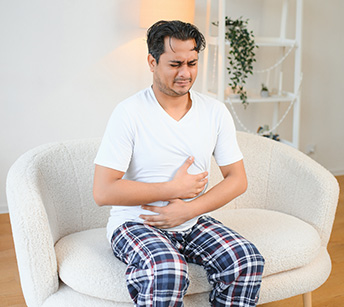
Stomach Pain
Recognize the different types of stomach pain to understand when to seek medical help.

Irritable Bowel Syndrome (Chronic)
Abdominal pain that is experienced for atleast 1D a week for 3 months.
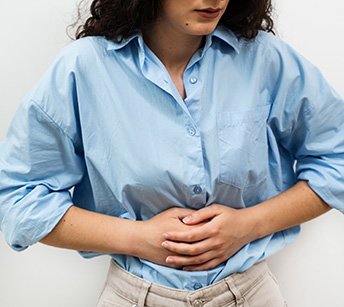
Menstrual Pain
The pain affecting individuals in their menstrual cycles typically centred in the lower abdomen
Colic (Chronic)
The sharp and localized abdominal pain that increases and then decreases in intensity.
01 Urinary Pain
A sudden, sharp, cramping pain in the side that is experienced due to kidney stone.
02 Renal Pain
The intense pain caused by a blockage in the ureter, typically due to a kidney stone.
03 Intestinal Colic
The cramping pain that comes and goes when the intestines attempt to push through a blockage.
04 Biliary Colic
A common type of upper abdominal pain caused by gallstones.
